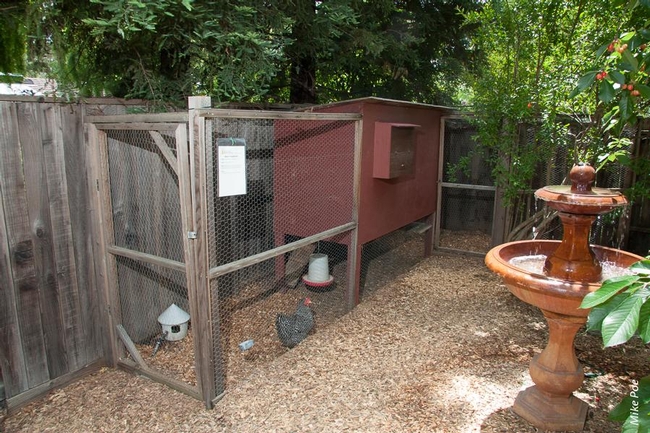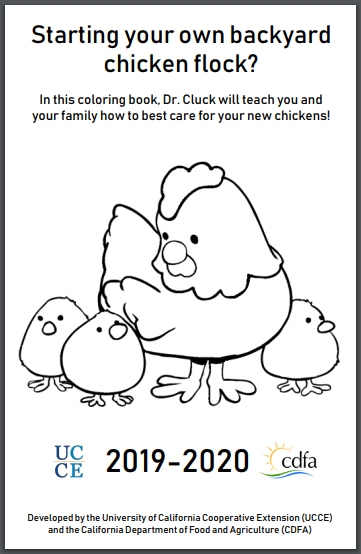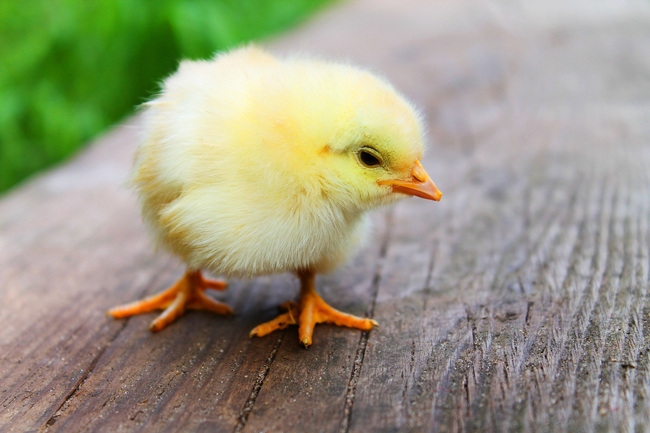Posts Tagged: chickens
Chickens join the list of 'shelter-in-place' must-haves
Like flour, yeast, toilet paper and hand sanitizer, all over the country there's been a run on chicks, wrote Diana Williams in a article published by the Sacramento Bee. The author and her family adopted four chicks, and as they grew, so did her thirst for information on raising chickens at home.
"Imagine my delight in stumbling across a backyard chicken census online," Williams wrote.
Pitesky said there are about 100,000 backyard flocks in California. Sacramento probably has about 11 percent of them, making it the third-highest backyard chicken region in the state, behind Los Angeles and San Francisco.
Raising backyard chickens seems to be another somewhat senseless hoarding practice taking place during the COVID-19 crisis. Williams admitted that, "this isn't exactly logical if you consider it's about half a year until chicks lay eggs." She speculated that a search for meaning, purpose and connectedness during COVID-19 uncertainty is another driver of chicken adoption, along with suddenly having more time at home.
"So the prospect of being able to have new life inside our house – life that's warm, fuzzy and unfolding in a new way every day – that seemed more than inviting. It felt essential," Williams wrote.
Industry producers are concerned about the trend.
“We don't like all these people getting into backyard birds,” said Bill Mattos, president of the California Poultry Federation. “People start out trying to grow their own eggs and find out it's not so much fun. Instead of trying to get rid of them properly, people turn them loose and they develop a disease. That's what scares the commercial industry.”
Poultry owners asked to monitor their birds for virulent Newcastle disease
Commercial and backyard poultry owners are asked to be attentive to their animals' health to help prevent the spread of the lethal and contagious virulent Newcastle disease now raging in Southern California, reported Bob Rodriguez in the Fresno Bee.
Symptoms of the disease include sneezing, coughing, green watery diarrhea, neck twisting, paralysis, decreased egg production and swelling around the eyes and neck, according to Maurice Pitesky, UC Cooperative Extension poultry specialist.
He said the popularity of backyard chickens is one of the challenges to controlling the disease. He estimates there are about 100,000 homes with poultry, with each home averaging five chickens.
"That is a lot more than in 2002, when we had the last outbreak (of virulent Newcastle disease)," Pitesky said. In 2002, the disease started in a backyard flock and eventually spread to 22 commercial poultry farms, killing 3.2 million birds.
"While people have the best of intentions, unfortunately a lack of biosecurity practices in people's backyards is one of the contributing factors of the disease spreading," Pitesky said.
Birds can become infected by coming into contact with other birds that are carrying the disease or by humans that carry the disease in their clothes or shoes. Pitesky said the disease also spreads when people purchase birds from a private party who may not be able to verify the bird is disease free.
He recommends buying from a hatchery or feed store that is affiliated with the National Poultry Improvement Plan, an organization that focuses on disease control.
“The goal is to be preventative,” Pitesky said.
If backyard chickens appear ill, owners should call the California Department of Food and Agriculture's State Bird Hotline at (866) 922-2473.
For more information on the disease, see the Virulent Newcastle Disease Outbreak Information and Resources page Pitesky has posted to his website, UC Cooperative Extension Poultry.
Salmonella infections resulting from backyard chickens
The Centers for Disease Control and Prevention is investigating a surge in human Salmonella infections linked to contact with live backyard poultry, reported Macy Jenkins on CBS Sacramento News.
The story included interviews with several chicken owners. One small girl said she loves to cuddle her chickens because "They're so cute." The owner of three specialty chickens said he allows the animals to "sleep inside with me in my bed." Both of those practices run counter to guidelines set by the CDC.
Jenkins spoke to UC Cooperative Extension specialist Maurice Pitesky, who said poultry owners should never let the birds inside of the house. His reason: "Always assume that any bird is a Salmonella carrier."
To prevent Salmonella infection, the CDC recommends:
- Always wash hands thoroughly with soap and water right after touching live poultry and anything in the area where the live and roam.
- Never allow poultry in the house, especially not in bathrooms and kitchen.
- Do not snuggle or kiss the birds.
- Stay outdoors when cleaning poultry equipment, such as cages, feed or water containers.
The most common symptoms of Salmonella infection are diarrhea, fever and abdominal cramps. The illness usually last 4 to 7 days, and most people recover without treatment.

As of May 25, 2017, the CDC reports 21 people in California have been infected by Salmonella via backyard chickens.
Backyard chickens ruling the roost in Bay Area
Even though backyard chickens are illegal in some Bay Area communities, their popularity continues to grow, reported Rebecca Parr in the Contra Costa Times.
The story was centered in Hayward, a community that is the latest to deal with local interest in very small-scale poultry husbandry. San Jose, Oakland, Berkeley and San Francisco do not require a permit or fee. Some communities require permits to slaughter animals for food. In Palo Alto, chicken permits are $60.
Parr spoke to UC Agriculture and Natural Resources poultry expert Maurice Pitesky about the growing trend of backyard chicken ownership.
"It's part of a general trend toward local food," said Pitesky, who is a UC ANR Cooperative Extension specialist based at UC Davis. "People read things in the media and feel they might be able to have more control and safer food if they're growing it themselves. It's a growing trend in urban areas, and poultry are relatively easy type of food animal to raise."
The article provided a link to the UC Cooperative Extension Poultry website, which includes information for backyard poultry, small-scale production and commercial production.
A Valentine for the Hens
We are the happy owners of three hens. Three years ago, I picked them out at a local feed store and brought them home. They were two days old, and I was twitterpated.
Eleanor (a black sex-link), Rosie (a New Hampshire red) and nearly feral Amelia (an Egyptian fayoumi) — are a delight. When they’re not molting, they lay delicious eggs, about eight a week. They have controlled the infestations of snails and slugs in our back yard, no small feat. Their digestive tracts keep us stocked with very rich compost, and they tuck themselves into their secure coop each night and are up with the sun each day.
OK, that up-with-the-sun part is annoying. Having hens is not an entirely blissful experience. They are not all-together garden-friendly. When we let them out of their run to forage around the yard, they make a beeline to peck away the leaves of tender seedlings. I must cover our raised vegetable beds with hateful bird netting. And, well, they do their business whenever and wherever they please, requiring a daily poop patrol.
But, dang, their eggs are tasty! And, as evidenced the other day, the girls can be great company. I was in the midst of a garden cleanup, stooped for hours, hand raking wet fallen leaves. The hens stuck by me most of the day, allowing the occasional scratch or clucking in response to my idle chitchat. At least that’s what I thought. I soon realized the girls were watching me gather leaves into piles that I would then pick up and put into our green toter. If I turned my back or didn’t move quickly enough, the hens would charge in and scratch through my leaf piles, seeking fresh bugs to eat. It became a race — me gathering leaves and whisking them away before the eagle-eyed trio could move in and “redistribute” my work.
Hey, it made the work go faster. And many young slugs met their demise that day. Thanks for the help, girls!

Three hens - Eleanor (from left), Amelia and Rosie, hunting and pecking for insects in our fallow raised beds.





